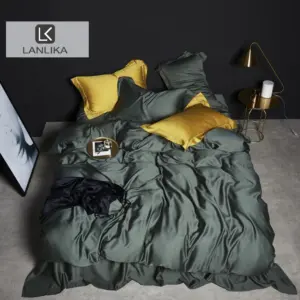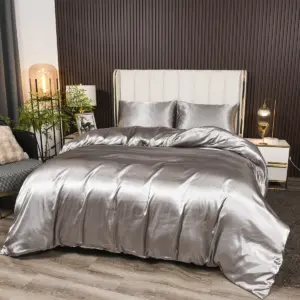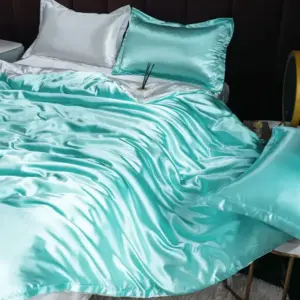Understanding Natural Dyes: Nature’s Art on Fabric
Natural dyes represent one of humanity’s oldest art forms—colorful pigments extracted from plants, insects, and minerals that have adorned textiles for thousands of years. Before the invention of synthetic dyes in the 19th century, civilizations worldwide relied solely on these natural sources to bring vibrant hues to their fabrics. From the royal purple of ancient Mediterranean cultures to the deep blues of Japanese kimonos, natural dyes have played a crucial role in human expression and cultural identity.
The rich history of natural dyeing stretches across continents and millennia. Egyptian tomb paintings show dyed fabrics from over 4,000 years ago, while ancient Chinese silk fragments reveal sophisticated dyeing techniques dating back to the Zhou Dynasty. In India, traditions like Kalamkari textile art have utilized natural dyes continuously for centuries, preserving techniques passed through generations.
Today, these time-honored methods are experiencing a renaissance in luxury bedding, particularly with amazing benefits of Mulberry silk sheets that complement the gentle nature of plant-derived colors. The marriage of premium silk with natural dyes creates bedding that’s not just beautiful but also connected to ancient traditions of craftsmanship.
What Are Natural Dyes and Their Historical Significance
Natural dyes are colorants extracted from organic sources found in nature—plants, insects, minerals, and even some shellfish. Unlike synthetic dyes created from petroleum-based chemicals, these pigments have been used to color textiles since the dawn of civilization.
Archaeological evidence shows naturally dyed textiles dating back to 3000 BCE in China and Egypt, where artisans developed sophisticated methods for extracting and fixing colors. Different regions became known for particular dyes: India for indigo and madder, Mexico for cochineal red, and Morocco for saffron yellows. These colors weren’t just decorative but often carried significant cultural and religious meaning.
The 1856 invention of the first synthetic dye (mauveine) began a rapid decline in natural dyeing traditions as mass manufacturing embraced cheaper, more consistent chemical alternatives. However, recent decades have seen renewed interest in natural dyes, particularly for premium textiles like what makes Mulberry silk special, as consumers seek authentic, non-toxic alternatives that connect to historical craftsmanship.
Diverse Sources of Natural Dyes
Natural dyes come from an astonishing variety of sources, each providing unique colors and characteristics:
Botanical Sources:
– Flowers: Marigold (yellow), hibiscus (pink to purple), safflower (yellow and red)
– Leaves: Indigo (blue), henna (orange-red), eucalyptus (soft pinks and greens)
– Roots: Madder (red), turmeric (golden yellow), rhubarb (tan to brown)
– Bark: Oak (brown), black walnut (deep brown), birch (beige to tan)
– Fruits: Pomegranate (yellow), elderberry (purple), blackberry (purple-blue)
Mineral-Derived Dyes:
– Iron compounds (grays and blacks)
– Copper compounds (greens and blues)
– Ochre (yellows and browns)
Insect-Derived Dyes:
– Cochineal insects (brilliant red)
– Lac insects (deep red to purple)
– Kermes insects (scarlet)
Marine Sources:
– Murex snails (royal purple)
– Sepia cuttlefish (brown-black)
Each source has specific preparation requirements and works differently on various fibers. Silk particularly excels with natural dyes because of its protein structure, which helps it bond beautifully with colors from green silk sheets to deep blues and earthy browns.
The Exceptional Benefits of Naturally Dyed Silk Bedding
When natural dyes meet luxurious silk, something magical happens. The protein fibers in silk create strong bonds with natural dye molecules, resulting in colors that have remarkable depth and subtle variation impossible to achieve with synthetic alternatives. This special relationship between silk and natural colorants produces bedding that offers unique benefits beyond mere aesthetics.
Naturally dyed silk bedding provides a triple advantage: health benefits for the sleeper, reduced environmental impact, and unmatched visual and tactile appeal. For discerning customers seeking the ultimate sleep experience, these bedding options represent a perfect blend of wellness, sustainability, and luxury.
The way natural dyes penetrate silk fibers enhances rather than diminishes the fabric’s natural properties. The temperature regulation, moisture-wicking capabilities, and gentle touch that make Mulberry silk bedding beneficial for skin remain intact, while the natural pigments add their own gentle attributes.
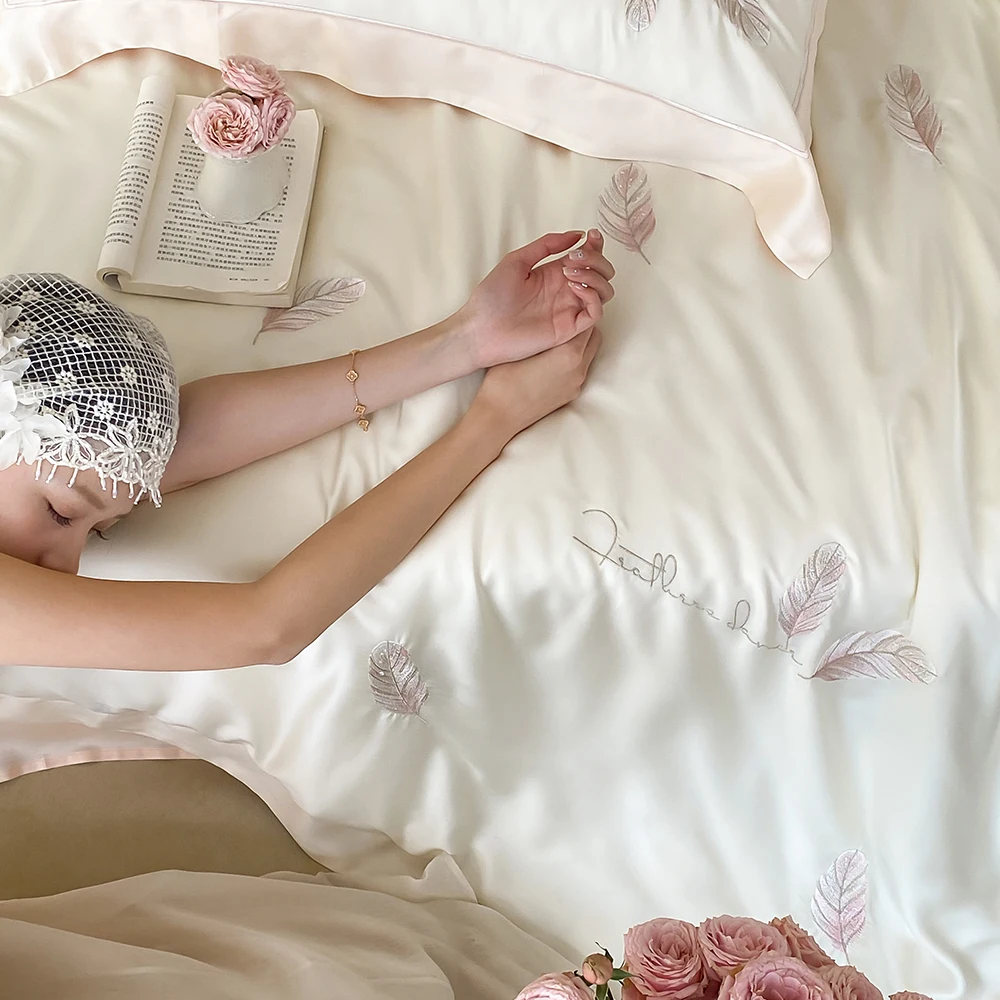
Hypoallergenic and Gentle on Sensitive Skin
One of the most significant advantages of naturally dyed silk bedding is its suitability for sensitive skin. Unlike synthetic dyes that often contain harsh chemicals like formaldehyde, heavy metals, and petroleum derivatives, natural dyes are typically free from these common irritants.
This gentleness makes naturally dyed silk an excellent choice for those with skin sensitivities, allergies, or conditions like eczema and dermatitis. The absence of chemical residues means less risk of contact dermatitis or overnight skin reactions. Many people who experience discomfort with conventionally dyed fabrics find that Mulberry silk sheets for sensitive skin dyed with natural pigments provide welcome relief.
The hypoallergenic properties come from both the inherent qualities of silk and the plant-based nature of many natural dyes. Together, they create a sleep environment that pampers skin rather than challenging it with synthetic compounds.
Environmental Harmony: Sustainability Benefits
Naturally dyed silk bedding offers substantial environmental advantages over conventionally colored alternatives:
- Biodegradable waste products that return safely to the earth, unlike toxic effluent from synthetic dye processes
- Significantly reduced water pollution as natural dye baths don’t contain the heavy metals and chemical fixatives that contaminate waterways
- Lower carbon footprint due to simpler processing methods that require less energy than industrial dyeing
- Renewable resources from plants that can be grown sustainably, often as part of traditional agricultural systems
- Support for agricultural diversity by creating markets for dye plants that can be part of regenerative farming
These qualities make natural dyes an important part of eco-conscious silk bedding options for environmentally mindful consumers. While no textile production is entirely impact-free, natural dyeing represents a significant step toward more sustainable luxury bedding.
Unique Aesthetics: The Beauty of Natural Color
The visual quality of naturally dyed silk creates an aesthetic experience unlike any other bedding. Natural dyes produce colors with extraordinary depth, subtle variations, and a soft luminosity that synthetic dyes simply cannot replicate. Each piece carries slight variations that make it uniquely beautiful.
Natural light interacts differently with these dyes, revealing subtle undertones as daylight changes throughout the day. Morning light might highlight golden notes in an indigo blue, while evening light brings out deeper violet undertones. This living quality creates bedding that feels alive rather than flat or static.
The color palette of natural dyes—muted earthy tones, soft blues, gentle pinks, and warm yellows—creates a naturally calming environment perfect for bedrooms. These colors tend to harmonize well with each other and with natural materials throughout the home. The visual depth of luxury silk bedding sets dyed with natural pigments adds sophisticated texture to any bedroom design.
Exploring Common Natural Dyes Ideal for Silk
Silk’s protein structure makes it particularly receptive to natural dyes, creating a strong chemical bond that results in vibrant, relatively colorfast results. This affinity between silk and natural colorants explains why historically, many of the most precious dyes were reserved for silk fabrics.
Not all natural dyes work equally well on silk. The best results come from dyes that naturally bond with protein fibers or can be fixed to silk using appropriate mordants (metallic salts that help secure the dye to the fiber). The most successful natural dyes for silk typically fall into two categories: those with natural tannins that bond directly with silk proteins, and those that require mordanting to create strong, lasting colors.
Understanding which dyes perform best on silk helps explain the palette commonly seen in premium naturally dyed silk bedding, from deep indigo blues to warm madder reds and golden yellows from plants like marigold.
Botanical Dyes: Colors from Plants
| Plant Source | Colors Produced | Characteristics |
|---|---|---|
| Indigo | Blues ranging from sky to midnight | Exceptional colorfastness, requires special fermentation process |
| Madder Root | Reds, from coral to deep brick | Excellent colorfastness, rich color depth |
| Osage Orange | Bright yellow to gold | Good light resistance, vibrant on silk |
| Weld | Clear, lemon yellow | Traditional European yellow dye, good fastness |
| Marigold | Golden yellows | Readily available, moderate lightfastness |
| Logwood | Deep purple to black | Rich colors, requires careful mordanting |
| Pomegranate | Warm yellow, tan | Contains natural tannins that bond well with silk |
| Walnut | Brown, from tan to deep chocolate | Self-mordanting, excellent fastness |
| Cutch | Reddish browns | Good colorfastness, traditional Asian dye |
| Fustic | Mustard yellows | Traditional dye for gold tones |
Most botanical dyes work best on silk when the fabric is prepared with a mordant—typically aluminum potassium sulfate (alum) for bright colors, iron for darker tones, or copper for greens. These Mulberry silk bedding sets colored with botanical dyes offer both beauty and the assurance of plant-based pigmentation.
Indigo: The Timeless Blue
Indigo stands apart from almost all other natural dyes because of its unique chemistry and dyeing process. Unlike most dyes that require mordants, indigo works through a reduction process where the dye must be transformed into a water-soluble form (white indigo) before it can penetrate the fiber. Once the fabric is exposed to air, the indigo oxidizes back to its blue form within the fiber itself.
This special process creates one of the most colorfast natural dyes available. Historical indigo-dyed garments have survived centuries with their blue color intact. On silk, indigo produces an extraordinary range of blues—from the palest sky blue to a blue so deep it appears almost black. The color typically has a slightly greenish undertone compared to synthetic blues.
Traditional indigo dyeing techniques vary across cultures but share the fundamental fermentation process. Japanese shibori indigo techniques create patterns through binding and folding, while African indigo dyeing often involves multiple dips to create extremely dark, rich blues. Modern adaptations have made indigo dyeing somewhat simpler while preserving the unique characteristics of this remarkable blue.
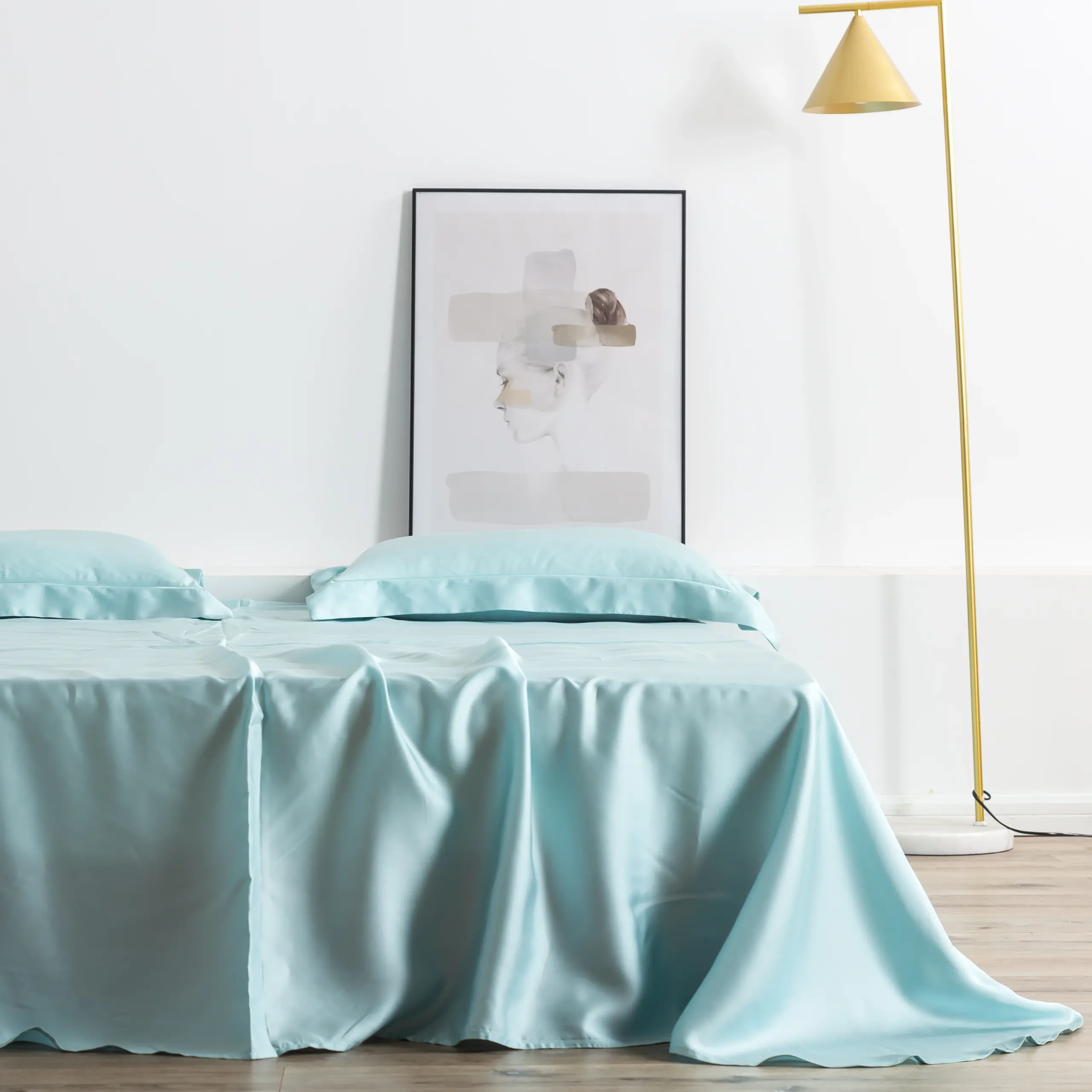
Madder Root: The Ancient Red
Madder root (Rubia tinctorum) produces one of history’s most important red dyes, used for thousands of years across Europe, Asia, and Africa. Archaeological evidence shows madder-dyed textiles from ancient Egypt, while the famous “Turkey red” process using madder became a closely guarded trade secret in textile history.
The magic of madder lies in its primary compound, alizarin, which bonds exceptionally well with the protein structure of silk. The range of colors achievable with madder is remarkable—from soft coral pinks to deep brick reds, depending on mordanting and dyebath conditions. With an aluminum mordant, madder produces bright reds; with iron, it creates deeper, more muted burgundies.
Madder has excellent colorfastness compared to many other natural dyes, particularly on silk. This durability explains why madder-dyed silk fragments have been found in good condition in archaeological sites. In modern luxury bedding, madder-dyed silk offers rich, complex reds that complement other natural colors beautifully, creating striking grey silk sheets with red accents or monochromatic red bedding with subtle variations.
Yellow Dyes from Nature: Turmeric, Marigold, and Osage Orange
Yellow dyes offer some of the brightest colors in the natural dye spectrum, though they typically require more careful handling to maintain their vibrance over time.
Turmeric produces an exceptionally bright, golden yellow with minimal processing—simply simmering the root powder creates a potent dye. However, it has poor lightfastness and will fade relatively quickly with exposure to sunlight. Its advantage is the ease of dyeing and the brilliant color it initially provides.
Marigold flowers (particularly the varieties Tagetes patula and Tagetes erecta) yield a range of yellows from soft butter to deep gold. With better lightfastness than turmeric, marigold has been used traditionally across India and Central America. The dried flowers can be stored for year-round dyeing, making them practical for commercial natural dyeing.
Osage orange (Maclura pomifera) heartwood creates one of the most colorfast yellows available from plants. Native to North America, this dye produces colors from bright yellow to deep gold, depending on concentration and mordant. With an aluminum mordant, it creates sunny yellows; with tin, it can produce almost neon yellow-greens; and with iron, it shifts to olive tones.
Yellow dyes generally benefit from careful mordanting and after-treatment to improve their staying power, especially when used for bedding that will be regularly laundered.
Insect and Mineral Dyes: Vibrant and Earth Tones
While plants provide the majority of natural dyes, some of the most prized colors come from insect and mineral sources, offering unique properties ideal for silk.
Insect Dyes:
Cochineal, harvested from the Dactylopius coccus insect native to Mexico and Peru, produces an extraordinary range of reds from bright crimson to deep purple-red. Historically more valuable than gold by weight, cochineal creates colors with remarkable colorfastness and intensity. On silk, it produces a vibrant red with cool undertones, distinct from the warmer reds of madder. Similarly, lac insects from Southeast Asia yield purple-reds that were traditionally reserved for royalty and religious garments.
Mineral Dyes:
Earth-based pigments create some of the most stable natural colors. Iron compounds produce tans, grays, and blacks depending on concentration. Ochre, composed of clay colored by iron oxide, yields yellows, oranges, and browns that have colored textiles since prehistoric times. Copper compounds create greens and blues with good colorfastness.
These premium dye sources were historically used for the most valuable textiles. Silk bedding colored with insect dyes like cochineal represents the height of luxury in natural dyeing, while mineral-dyed silks offer subtle earth tones with excellent stability. The combination of these rare colorants with premium silk creates bedding of exceptional quality and historical significance.
The Artisanal Process of Naturally Dyeing Silk
Natural dyeing is both science and art—a meticulous process requiring specialized knowledge, patience, and attention to detail. Unlike industrial dyeing that can be completed in hours, natural dyeing often takes days from preparation to completion. This time-intensive process explains much of the premium value of naturally dyed silk bedding.
The journey from raw silk to beautifully colored bedding involves multiple stages, each critical to achieving rich, lasting color. Traditional dye houses often maintain recipes and techniques passed through generations, with subtle variations that create their signature colors. Modern artisanal dyers combine this traditional knowledge with scientific understanding of dye chemistry to create consistent, high-quality results.
The investment in proper natural dyeing techniques directly affects the final product quality. Shortcuts in the process inevitably lead to poor colorfastness or uneven results. Understanding what goes into properly dyed silk helps explain the value difference between mass-produced bedding and artisanal pieces. For those interested in the broader context of silk quality, the complete guide to Mulberry silk bed sheets provides valuable background information.
Preparation: Scouring and Mordanting Silk
Before dyeing begins, proper preparation of the silk is essential for good results. This two-step process creates the foundation for successful color application:
Scouring removes any natural oils, waxes, dirt, or processing residues from the silk. Even high-quality silk contains sericin (silk gum) that can prevent dye penetration if not properly removed. The scouring process typically involves gently simmering the silk in a solution containing mild, pH-neutral soap specifically formulated for protein fibers. This cleansing process opens the fiber structure, allowing dyes to penetrate evenly.
Mordanting creates the chemical bridge that binds dye to fiber. The word “mordant” comes from the Latin “mordere” (to bite), as these substances help the dye “bite” into the fabric. For silk, the most common mordants include:
- Aluminum potassium sulfate (alum): The most widely used mordant for silk, producing bright, clear colors with minimal effect on the hand of the fabric
- Iron sulfate: Creates darker, more muted colors and improves colorfastness
- Tin chloride: Produces brilliant, vibrant colors but must be used sparingly as it can damage silk fibers
- Copper sulfate: Creates greener tones and improves light fastness
The mordanting process involves simmering the scoured silk in a solution containing the dissolved mordant at carefully controlled temperatures. This creates metal-protein complexes within the silk that will later bond with the dye molecules. Different mordants create different color results with the same dye, expanding the palette available from each natural source.
Dye Extraction and Application Techniques
Once the silk is prepared, the actual dyeing process begins with extracting pigment from the dye source:
Traditional extraction involves simmering plant material, insect dyes, or minerals in water to release the colorant. Different dye sources require specific extraction methods—some need longer simmering, others do better with cold extraction, and some require pH adjustments to release their full color potential. For example, madder root traditionally steeps overnight in cool water before gentle heating, while logwood requires more vigorous simmering.
Modern adaptations sometimes use pre-extracted dye powders or concentrated extracts that provide more consistent results while maintaining natural origins. These extracts eliminate variables in plant material quality while preserving the benefits of natural dyes.
The application of dye typically follows one of several methods:
Immersion dyeing: The prepared silk is fully submerged in the dye bath and gently heated to promote dye uptake. The fabric is turned regularly to ensure even color distribution.
Shibori techniques: Japanese methods involving folding, binding, or stitching silk before dyeing to create patterns and resist areas.
Bundle dyeing: Fresh plant materials are bundled directly with silk and steamed to transfer pigment and plant impressions directly to the fabric.
Dip dyeing: Creating ombré effects by progressively dipping portions of the fabric into the dye bath for varying lengths of time.
For premium silk bedding, immersion dyeing is most common as it produces the most even results, though some artisanal producers incorporate pattern techniques for specialty items.

Understanding the Unique Characteristics of Natural Dyes
Natural dyes possess distinct characteristics that set them apart from their synthetic counterparts. Rather than viewing these differences as limitations, understanding them helps appreciate the special qualities they bring to silk bedding.
Unlike synthetic dyes engineered for absolute consistency, natural dyes create what textile artists call “living color”—hues that evolve subtly over time while maintaining their essential character. This evolution isn’t necessarily fading but rather a gentle maturing of color that adds to the textile’s beauty and story.
Color variation is an authentic signature of natural dyes. Even within a single dye batch, slight variations create subtle depth and visual interest impossible to achieve with synthetic uniformity. From one production run to another, these variations may be more pronounced as natural dye materials differ seasonally and by source region. Far from being flaws, these variations highlight the authentic, handcrafted nature of naturally dyed silk.
When comparing newly dyed silk to pieces that have been used and washed multiple times, natural dyes typically soften rather than fade dramatically. The color often becomes more harmonious and integrated with the silk’s natural luster, creating an aged beauty prized by textile connoisseurs.
Colorfastness and Natural Evolution of Hues
Colorfastness—a dye’s resistance to fading or bleeding—varies significantly among natural colorants. While some natural dyes like indigo and walnut offer excellent colorfastness rivaling synthetics, others like turmeric or berries will noticeably shift over time.
Factors affecting the stability of natural dyes include:
Light exposure: Ultraviolet light is the greatest enemy of most natural dyes. Direct sunlight can cause noticeable changes in some dyes within weeks, while others may maintain their color for years.
Washing frequency and method: Each washing gradually removes a small amount of dye. Gentle hand washing with pH-neutral soap preserves color significantly better than machine washing or harsh detergents.
Water pH: Hard water with high mineral content or highly alkaline water can shift natural dye colors with repeated washing.
The specific dye used: Indigo, walnut, madder, and many insect dyes have excellent colorfastness. Plant-based yellows typically have less staying power.
For bedding, dyes should be selected and applied with these factors in mind. Premium naturally dyed silk flat sheets typically use more colorfast dye options or blends that age gracefully. The best producers test their colors for washfastness and lightfastness before offering products commercially.
Rather than expecting perpetual color stability, many appreciate how naturally dyed textiles evolve—often becoming softer and more harmonious over time rather than simply fading. This characteristic evolution adds to the personal connection users develop with their bedding over the years.
Caring for Your Naturally Dyed Silk Bedding
Proper care significantly extends the beauty and lifespan of naturally dyed silk bedding. With appropriate maintenance, these special textiles can remain beautiful for many years, developing character while retaining their essential color.
The care philosophy for naturally dyed silk balances three key needs: maintaining the physical integrity of the delicate silk fibers, preserving the natural dyes’ color, and ensuring proper cleanliness for bedding. With some simple but specific practices, this balance is easily achieved without specialized equipment or excessive time investment.
The investment in quality naturally dyed silk bedding is best protected through consistent, gentle care routines. Each proper washing and storage cycle helps preserve both the silk’s luxurious feel and the dye’s beautiful color, allowing these special textiles to become even more personal and cherished over time.
Gentle Washing Techniques
Naturally dyed silk requires specific washing approaches to maintain both the fabric and color integrity:
- Hand washing is ideal – Fill a clean basin with cool to lukewarm water (never hot)
- Use pH-neutral cleaners specifically formulated for silk or delicates
- Avoid conventional detergents which often contain brighteners and harsh alkaline ingredients that damage both silk and natural dyes
- Submerge and gently agitate rather than rubbing or wringing
- Limit soaking time to 5-10 minutes to prevent dye bleeding
- Rinse thoroughly with cool water until water runs clear
- Add a tablespoon of white vinegar to the final rinse water to restore pH balance (especially helpful for hard water areas)
- Wash dark and light colors separately for the first few washes
- Wash bedding every 10-14 days – silk naturally resists dirt and bacteria longer than cotton
For spot cleaning, address stains promptly with cool water and mild soap, gently blotting rather than rubbing the fabric. Avoid bleach, stain removers, and fabric softeners, which can damage both the silk fibers and natural dyes.
Drying, Ironing and Storage Best Practices
How you dry and store naturally dyed silk is just as important as how you wash it:
Drying Naturally Dyed Silk:
* Remove excess water by gently pressing between clean towels (never wring or twist)
* Lay flat to dry on a clean white towel away from direct sunlight
* Reshape while damp to prevent wrinkles
* Avoid hanging wet silk bedding, which can stretch the fabric
Ironing When Necessary:
* Iron only when silk is completely dry or very slightly damp
* Use the lowest heat setting specifically for silk
* Place a clean white cloth between the iron and silk
* Iron on the reverse side when possible to protect the color
Seasonal Storage:
* Ensure silk is completely clean and dry before storing
* Avoid plastic containers which can trap moisture and lead to mildew
* Use acid-free tissue paper or cotton bags for storage
* Store in a cool, dry place away from direct sunlight
* Add cedar blocks rather than mothballs to deter pests
* Avoid folding along the same lines each time to prevent permanent creases
Following these care guidelines will help your naturally dyed silk bedding maintain its beauty and continue to evolve gracefully over time.
Selecting Quality Naturally Dyed Silk Bedding
100% Silk Sheets, Green Silk Sheets, King Size Silk Bedding Set, Mulberry Silk Bedding Sets, Queen Size Silk Bedding Set
Price range: $1,246.21 through $1,615.22 Select options This product has multiple variants. The options may be chosen on the product pageGrey Silk Sheets, Silk Sheet and Pillowcase Set
Price range: $88.20 through $146.64 Select options This product has multiple variants. The options may be chosen on the product page100% Silk Sheets, King Size Silk Bedding Set, Mulberry Silk Bedding Sets, Queen Size Silk Bedding Set, White Silk Sheets
Price range: $1,000.79 through $1,351.42 Select options This product has multiple variants. The options may be chosen on the product pageKing Size Silk Sheets, Pink Silk Sheets, Silk Flat Sheets
$132.96 Select options This product has multiple variants. The options may be chosen on the product page- Price range: $153.18 through $158.04 Select options This product has multiple variants. The options may be chosen on the product page
Luxury Silk Bedding Sets, Mulberry Silk Bedding Sets, Silk Sheet and Pillowcase Set
Price range: $61.33 through $159.87 Select options This product has multiple variants. The options may be chosen on the product page
Finding high-quality naturally dyed silk bedding requires attention to several key factors that indicate craftsmanship and value. The combination of premium silk and proper natural dyeing techniques results in bedding that justifies its investment through superior quality, longevity, and sleep experience.
When evaluating naturally dyed silk bedding, look beyond just color appeal. Quality indicators include even dye application, rich color depth, consistent stitching, and proper finishing that maintains silk’s natural drape and feel. Reputable producers will be transparent about their dyeing processes and silk sourcing.
Price points for naturally dyed silk bedding typically range higher than conventionally dyed alternatives, reflecting the additional time, skill, and materials required. Entry-level naturally dyed silk pillowcases might start around $80-120, while complete bedding sets often range from $500-1,500 depending on size, silk weight, and dyeing complexity. The advantages of sleeping on Mulberry silk make this investment worthwhile for many discerning customers seeking the ultimate sleep experience.
Quality Markers: Silk Grade and Dye Documentation
When selecting naturally dyed silk bedding, these specific indicators help identify superior products:
Silk Quality Specifications:
* Momme weight: Premium silk bedding typically falls between 19-25 momme (higher numbers indicate denser, more durable silk)
* Mulberry silk specification: 100% Mulberry silk offers the best quality for bedding
* Weave type: Charmeuse weaves provide the classic silk feel with one shiny side; habotai offers lightweight breathability
* Long fibers: Products made with long silk fibers have greater durability and smoother finish
Natural Dye Verification:
* Specific dye source identification: Quality producers name the actual plant, insect, or mineral sources used
* Transparent process documentation: Information about mordanting agents and fixatives used
* Washfastness claims: Reputable companies test and document how their dyes perform after multiple washes
* Batch variation disclosure: Honest companies acknowledge the natural variation between dye batches
Relevant Certifications:
* OEKO-TEX® certification: Ensures textiles have been tested for harmful substances
* GOTS (Global Organic Textile Standard): Verifies organic status of materials and environmental production standards
* Peace silk or Ahimsa silk: Indicates silk harvested without killing silkworms (important for ethical consumers)
* Fair trade certifications: Ensures fair compensation and working conditions for artisans
By evaluating these specific criteria, consumers can confidently select naturally dyed silk bedding that offers both quality and authenticity. The combination of premium silk with properly executed natural dyeing creates bedding with exceptional comfort, visual beauty, and ethical value.
Frequently Asked Questions About Natural Dyes in Silk Bedding
Are naturally dyed silks truly safe for sensitive skin?
Yes, properly executed natural dyeing processes generally create textiles that are gentler on sensitive skin than conventional synthetic dyes. The absence of azo compounds, formaldehyde resins, and heavy metals found in many synthetic dyes significantly reduces irritation risk.
However, individual sensitivities vary. Some people may react to specific natural dye plants (particularly if they have known allergies to related plant families), or to certain mordants used in the dyeing process. Alum-mordanted dyes tend to be the gentlest option for extremely sensitive individuals.
Products that have been properly scoured after dyeing to remove any excess dye or mordant compounds offer the lowest risk of skin irritation. When in doubt, request information about specific dye sources and mordants from the manufacturer.
How do I know if a product truly uses natural dyes?
Verifying natural dye claims requires some investigation:
Look for specific information about dye sources—reputable companies name actual plants, insects, or minerals rather than using vague terms like “plant-based dyes” or “eco-friendly colorants.” Request details about mordants used, as this indicates authentic natural dyeing knowledge.
Be wary of unnaturally bright or perfectly consistent colors, especially vibrant purples, blues, and greens, which are difficult to achieve with natural dyes alone. Natural dyes typically have subtle variations and depth rather than flat, uniform color.
Terms like “nature inspired colors” or “botanical color palette” without specific dye source information often indicate synthetic dyes that merely mimic natural colors. Genuine naturally dyed products will acknowledge batch variation and may offer care recommendations specific to natural dyes.
What makes naturally dyed silk bedding worth the investment?
Naturally dyed silk bedding represents a premium sleep experience that justifies its higher cost through multiple value dimensions:
The combination of silk’s natural benefits (temperature regulation, moisture management, gentle on skin and hair) with the non-toxic properties of natural dyes creates bedding that supports health and wellness during the third of your life spent sleeping.
Environmentally, the reduced chemical impact of natural dyes means your luxury choice also minimizes harm to waterways and ecosystems. This ethical dimension adds value for environmentally conscious consumers.
Aesthetically, the unique depth, subtle variation, and living quality of natural colors create bedding with visual and tactile richness that mass-produced options cannot match. These colors typically age beautifully, developing character rather than simply fading.
Finally, the connection to ancient textile traditions and artisanal craftsmanship gives naturally dyed silk bedding cultural significance and authenticity increasingly rare in today’s mass-market world. This historical connection creates an emotional value beyond functional benefits.


